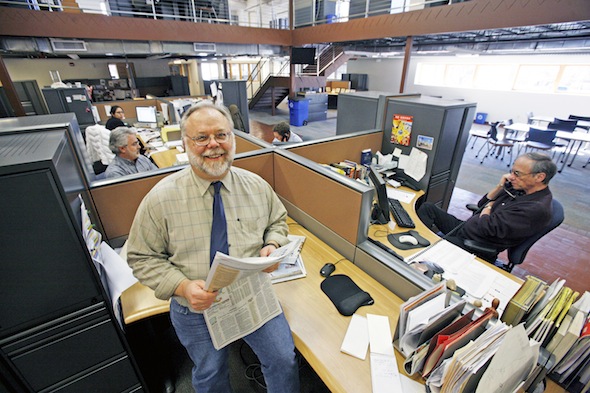Sign up for the daily CJR newsletter.

In 1992, Rob Dean became editor of the Santa Fe New Mexican, the main news source in a small but cosmopolitan city. Dean, a Montana native who had previously been an editor at The News Tribune in Tacoma, WA, arrived three years after then-owner Robert McKinney won a legal battle to regain control of the paper. Dean ran the New Mexican during a period of profound media-world change, as the Internet evolved into journalism’s 800-pound gorilla. The New Mexican grew during much of his time there, but in 2008, like papers everywhere, it was forced to cut staff. Dean, 59, stepped down in July. CJR’s Christopher Massie spoke to Dean about Santa Fe, the New Mexican, local news in a digital age, and what he’ll do next.
What about the New Mexican appealed to you when you took the job?
Santa Fe is rich in history and culture and art and independent thought. It’s been a political center all of its history. The New Mexican is the oldest newspaper in the West, and I saw the paper in the midst of a rebirth. So it was a chance to catch that wave in a community that really deserved good journalism.
How did you approach the job of understanding and helping a community, like Santa Fe, that has a complex history?
My friends and neighbors have roots in the community probably deeper than I do. As journalists, we have to understand that our readers or viewers have this impulse to say, ‘If only I were mayor for a day, what would I do?’ We tried to respond to that not by preaching to them, but by giving them the information that empowers them to fix their own world.
What was your approach to covering the Native American communities around Santa Fe?
The Native peoples were the first settlers of our region and their presence in Santa Fe is inescapable, but it takes a concerted effort to cover them. Native communities are sovereign entities. Things like state public-records laws and federal freedom-of-information requirements are not necessarily things they embrace or have to abide by. The best way to cover Native communities is to have reporters on your staff with an understanding of those issues, which are both cultural and political.
How did you cut back your staff without sacrificing the integrity of the paper’s mission?
We decided to choose fewer topics to cover. We tried to define the signature qualities of Santa Fe and how we could identify beats that gave us quality coverage. We had a whole staff devoted to covering the region around Santa Fe, and we cut that back.
As a leader, how did you balance the need to sometimes say ‘no’ to people with the need to keep them feeling good about themselves?
I tried to communicate that the strength of an organization is the strength of individuals. Their skills, values, experiences, and interests are the keys to finding and publishing great stories. I tried to give every individual a clear line of sight between his or her work and the bigger mission of the organization. That was a way to minimize office politics or squabbling or jealousy.
Why did you decide to leave now?
It just felt like it was the right time. It’s never difficult to serve the interests of the older, richer, whiter part of a community. I represent that. A news organization should be led by an editor who lives the experience of what it is to educate his or her kids, find healthcare for his or her family, or face the challenge of buying a home.
What’s next?
I’m very interested in young people and their education, their preparation to manage this world. I’m also a student of history. One of my two sons is a historian, too, and we have a book on World War I that we’ve been working on.
Has America ever needed a media defender more than now? Help us by joining CJR today.






